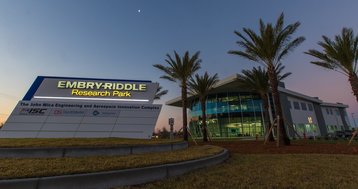Embry-Riddle Aeronautical University’s Research Park in Florida has installed a Cray CS400 cluster supercomputer to be used by the John Mica Engineering Aerospace Innovation Complex (MicaPlex) to develop new technologies.
The department performs research in astronoautics, space and atmospheric physics, space vehicles, commercial space operations as well as unmanned and automated systems for water suface and underwater environments. It hopes that the supercomputer will allow it to perform such studies and attract external funding for future research.
Las Vega
“Embry-Riddle has a rich, respected history in the aviation and aerospace communities, and we are honored that a Cray supercomputer will support their commitment to pioneering research and educating the next-generation of industry professionals,” said Fred Kohout, Cray’s senior vice president of products and chief marketing officer.
“Our Cray CS systems leverage our 40-plus years of designing and building world-class supercomputers, and we are pleased that industry-leading organizations like Embry-Riddle continue to recognize the impact Cray supercomputers can have in achieving breakthrough results.”
The four-cabinet system was named Vega, after the world’s fifth brightest star (not including the sun) which is also the second brighest in the northern celestial hemisphere. The company’s modular platform is built around Intel’s Xeon E5-2600 v3 processors, with over 3000 cores and supports either Intel Xeon Phi coprocessors or NVIDIA Tesla GPUs.
Launched in 2014 with the Haswell-powered XC40 machine, the CS400 cluster is already used by the Argonne National Laboratory, the UK Met Office as well as the Korean Meteorological Administration, the Swiss National Supercomputing Centre (CSCS) and the US Department of Defense.
Cray, which is behind the world’s third most powerful supercomputer, Titan, has since launched its XC50 supercomputer and CS500 cluster, with the addition of Intel Xeon Scalable processors, offering a top peak performance of 500 petaflops, and one petaflops per cabinet.
“As a powerful numerical research tool, our new Cray system is a wonderful complement to the new state-of-the-art wind tunnel and other experimental facilities at the MicaPlex,” said Dr. William Engblom, professor of Mechanical and Aerospace Engineering and HPC Committee Chair.
“High-performance computing capabilities are vitally important to the aerospace and aviation industries, and we are pleased that our students and faculty can now apply the power and performance of a Cray supercomputer to their research projects.”

